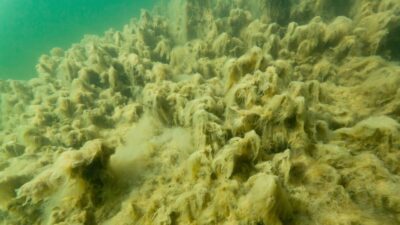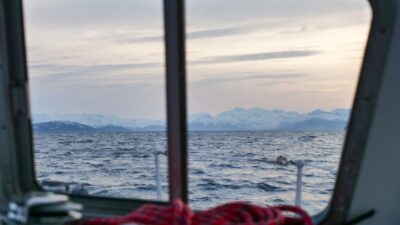Aalto Summer School Explores Water and Creating Change through Art
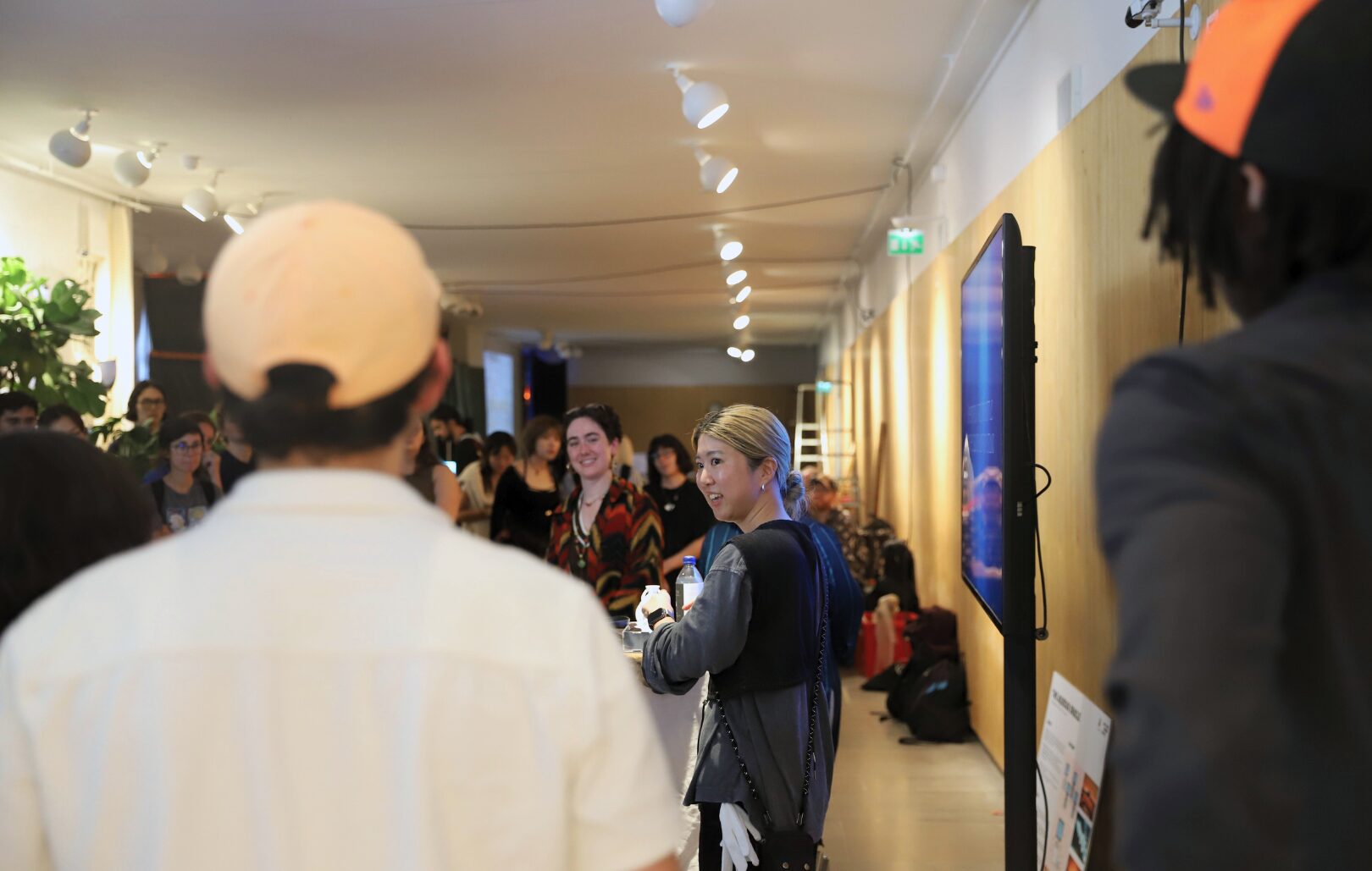
Writer
The 2024 theme of Aalto ARTS summer school was Embodied Water. The John Nurminen Foundation took part in the school’s symposium in June by presenting and discussing ocean related challenges and conservation work in the Baltic Sea. The interdisciplinary approach of the summer school combines art, technology, and design to tell stories about a globally relevant theme, varying each year. In 2024, by merging scientific knowledge and artistic expression, the students from around the world dived into water-related questions of sustainable development.
“The emotional bond to water is important if we want to drive change. What can be created when we combine approaches from different disciplines?” asks Rauno Ronkainen, Associate Professor of Cinematography at Aalto University.
Why water? Water issues are global, regional, and local, ranging from the challenges of clean water and sanitation to ocean conservation. The summer school addresses themes that have worldwide relevance and can be approached from various perspectives. Previous themes have focused on forests and the circular economy.
Before the actual “concept development,” meaning the work on final projects in Espoo, the students familiarized themselves with the theme, conducted background research, and discussed the topics in their groups.
Shifting Perspectives on Water
The final projects that the groups created vary vastly regarding the used technologies and tools from different design disciplines, such as film, data visualization, and game design.
One of the concepts, Rippled Reflections, aims to explore the connection between humans and water. When a person speaks into a microphone, a ripple effect is created in the water in front of them. The inspiration comes from water as a constantly moving entity that responds to external stimuli, such as sound.
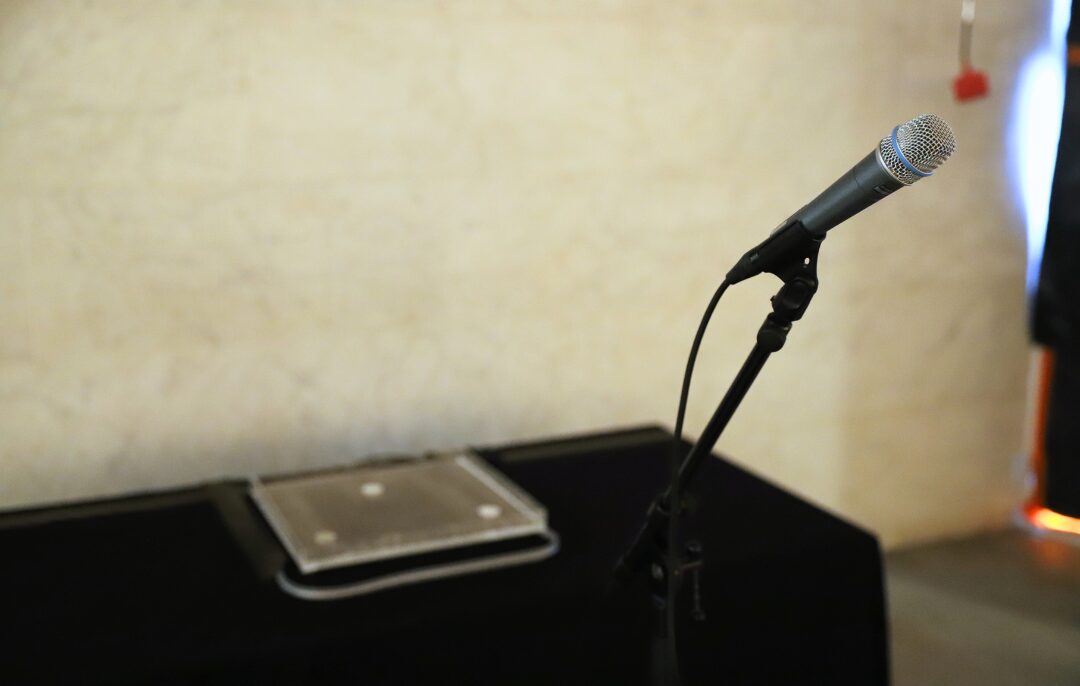
“The idea is that as you share your memories into the microphone, you can see them reflected in the water. We aimed to shift the perspective on how we view water”, explains Utpala Jadhav, a member of the group behind Rippled Reflections.
Observing the students speaking into the microphone – one softly and the other raising their voice – shows how captivating and fun the water’s movement is to the people gathered around the small pool of the installation.
Stories that Resonate and Create Change
Perhaps it is art than can help us better grasp water-related issues and the meaning of water, from its environmental to cultural and societal significance.
“We can create movements through art. This can lead to changes in policies if people push for it enough. Art and creativity can really hit you emotionally: the messages resonate”, says Eloïse Jenninger.
Jenninger was a part of a group that created an installation, The Aqueous Oracle, on how generative artificial intelligence (AI) uses water. The growing use of AI products have increased the need for water in cooling data centers.
Realizing that one conversation with ChatGPT uses about a half a liter of water, the group created an interactive installation that uses mythology to tell a story. On the screen you can see AI embodied by water spirits. As the user asks the AI a question, they need to add 500 ml of water for it to function.
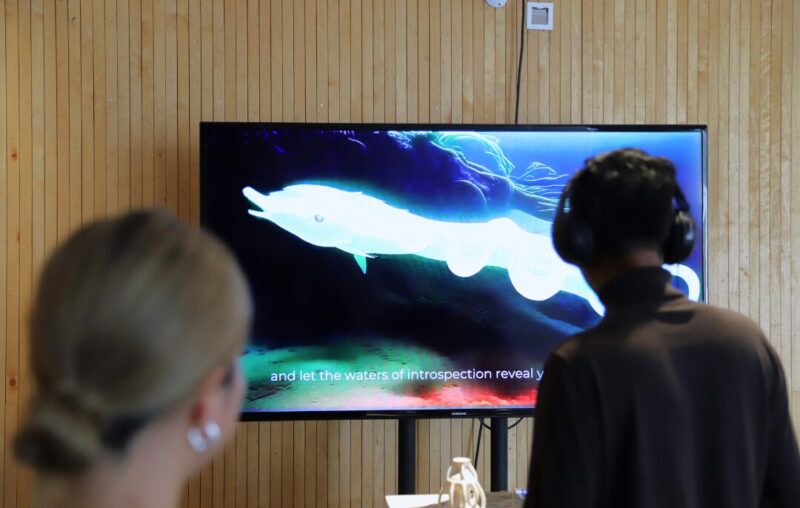
“We knew we wanted to tell a story because stories are a way to learn and retain information. We used AI to create the animations. It was also important to include the physicality of water so that people would understand the effects of having a conversation with ChatGPT”, explains Jenninger.
Information Without Losing Hope – A Delicate Line
Should advocacy aim to bring about change by presenting hard-hitting facts and alarming scenarios, or should it focus on creating hope?
Cathy Ellington was part of a group project delving into the subject of fast fashion and its drain on freshwater resources. The aim of the concept Draped in Water was to create an emotional experience where the user connects with water yet is confronted with the damages our clothing choices have on natural landscapes.
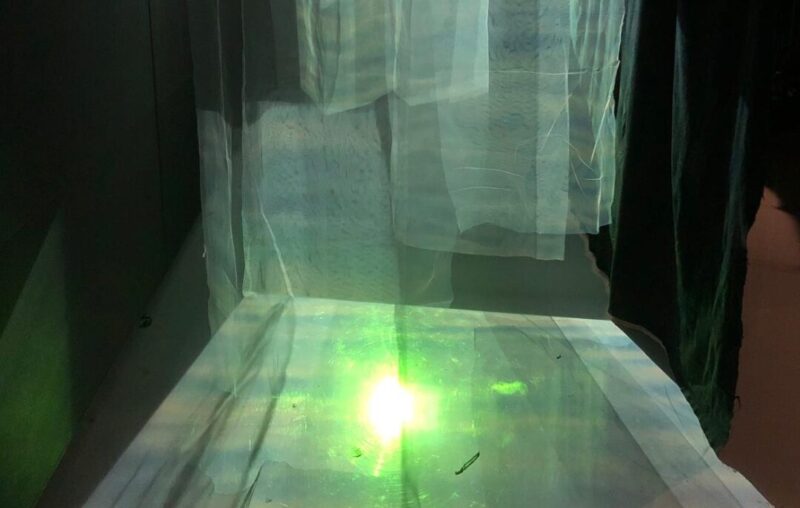
According to Ellington, giving information without creating hopelessness is a delicate line. Yet in general making people emotionally connected through art has a huge impact.
After moving through a narrow corridor and experiencing an abstract film about water and the clothing industry, the audience is given leaflets filled with numbers. The eye-capturing designs on the other side aim to subliminally convey the installation’s message by using common warning signs and a large number that intrigues one to ponder its meaning. The other side of the leaflet is filled with statistics that become clearer after experiencing the film; the numbers take on an emotional meaning that they wouldn’t have otherwise.
“How do we marry the leaflet and the film? There are so many numbers in the leaflet. Only watching them your mind would just switch off. My mind would switch off. My brain needs something more than numbers – we are emotional creatures”, reflects Ellington.
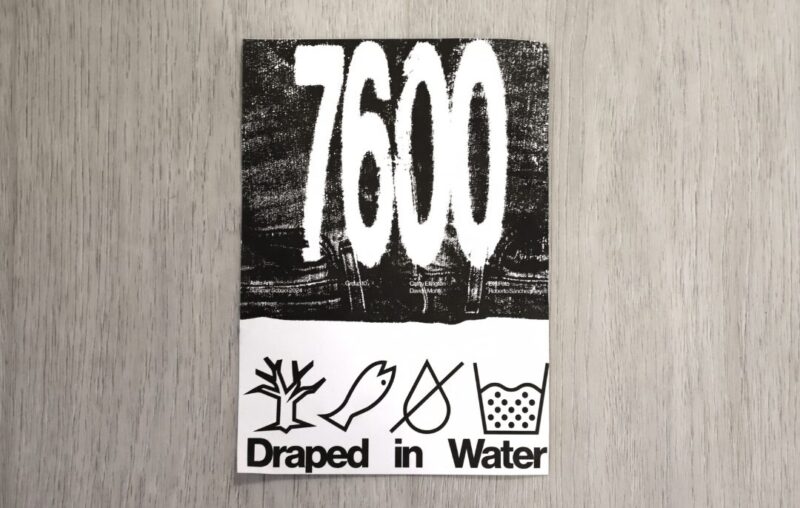
Experiences from Around the World
Not only did the summer school bring together tools from multiple disciplines, but the attendees also came from around the globe. Echoing in the conversations with the students and tutors was the impact of bringing together the views of people from different backgrounds and experiences.
According to Savyasachi, one of the tutors, the different experiences brought up diverse ways of approaching the theme. Does one connect water to drought or flooding? Are swimming and water games the first things that come to mind?
The different perspectives highlight just how present water is in our lives, albeit in vastly different ways. Yet all of us humans rely on it.
“Many of us take water for granted. We need water to live – we are literally made of it”, Jenninger points out.
Living by the Baltic Sea, we are surrounded by water in many forms. We go to a steaming hot sauna, enjoy a refreshing cold plunge, and scrape off the ice covering our windscreen on a frosty morning. Do we truly understand the ever-present role of it?
Experience the Projects
As part of the Helsinki Design Week you can experience an installation based on the documentation produced by the summer school participants. It is produced by Heidi Ulappa, a designer and coordinator of the summer school. Paasivuorenkatu 3, Helsinki, free entry.
